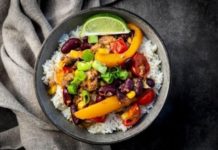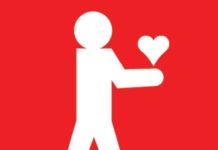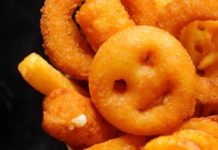
There’s something so good about a stellar snack. At its best, it can be the ideal pick-me-up prior to, or after, a really tough workout or a way to keep your blood sugar and energy levels stable until the next meal. But snacking isn’t an automatic win. At its worst, it can be the culprit for deterring your healthy progress and ultimately sabotage your weight-loss goals.
Here, experts discuss the biggest snacking mistakes you’re probably making and how to fix them.

It’s common to try to keep snack calories and portions to a minimum because you’re under the impression something’s wrong with reaching in the pantry in between meals. “But that’s not true,” says Kristen Peterson, RD, owner of PrimeLife Nutrition. “Snacking helps you avoid getting hangry. Plus, eating 4–5 smaller and more frequent meals throughout the day is a proven strategy for increased weight loss.”
The fix: Instead of snacking on something low-cal that won’t satisfy you (like carrots or celery sticks) pair them with 2 tablespoons of hummus or peanut butter, suggests Peterson. This more filling option won’t break the calorie bank and should help keep you from overeating later.

If you’ve ever reached for something sweet or salty out of pure boredom you’re definitely not alone. “Sometimes it’s the candy bowl in the office or late-night eating while watching TV,” says Melissa Boufounos, a certified holistic nutritionist. Over time, these small bites can add up and prevent you from reaching your goals.
The fix: Before reaching for a snack, do a hunger check. “On a hunger scale of 1–10, 1 being not hungry at all and 10 being the hungriest you’ve ever felt, you should aim to eat when you’re around 7,” says Boufounos.

“Things like nuts, seeds and dried fruit can be great, nutrient-dense snacks, but they can be easy to overeat if you’re not careful,” says Boufounos. Check out these common portion-size mistakes because when it comes to eating healthy foods, it’s still possible to overdo it.
The fix: Instead of eating right out of a bag of nuts and seeds, serve yourself the appropriate portion size.”

“If you have a lighter lunch at noon and didn’t remember to pack any snacks, you’re almost guaranteed to reach for something less healthy on your way home or overeat at dinner,” says Peterson.
The fix: Make snack prep a part of your regular meal prep routine, advises Peterson. You can also keep some crackers and cheese or healthy homemade trail mix at the office. “It’s always better to have something on hand in case, even if you’re not hungry and end up saving your snack for the next day.”

Both protein and fat are essential macronutrients that help keep you feeling full and satisfied. “If you have something like watermelon for a snack at 10 in the morning, you’re going to be pretty hungry before lunch is even approaching,” says Peterson. “When you just eat a fruit or vegetable as a snack, it can raise your blood sugar, then drop it, leaving you feeling hungry within an hour.”
The fix: Opt for snacks that incorporate both a healthy fat or protein, like almonds for example, with your fruit. “This will help you stay fuller longer and avoid extra servings at lunch or dinner because you’re starving,” Peterson adds.

Some people forgo fruit, mistakenly thinking the natural sugars present are an obstacle for their weight-loss efforts. In the process, “you’re reducing fiber and so many healthful nutrients,” says Jackie Newgent, RDN. “Fiber helps provide satiety, aka the feeling of fullness, that can actually help to prevent overeating.”
The fix: Incorporate small amounts of fruit throughout the day to help you get enough fiber, suggests Newgent. “I find one of the easiest ways to do that is to enjoy a couple California prunes along with most meals. A serving of prunes (dried plums) has 3 grams of fiber and supports good digestive health,” she says. As a bonus, “they can nutritiously satisfy a sweet tooth.”

“When we drastically cut carbs, the body releases specific hormones to counter the restriction, promoting increased cravings for the macronutrient,” says Rachel Fine, RD. “This is because our body relies on both carbs for very specific metabolic functions,” she adds. “When the macro isn’t available (from dietary restriction), the body will fight until you can no longer resist and give into that craving.”
The fix: Carbohydrates should make up 45–65% of total calories in your diet, according to the Dietary Guidelines for Americans. There’s no one-size-fit-all guidance for the absolute amount of carbs to consume, and that’s because our bodies are all different. Focus on healthy complex sources (that won’t spike blood sugar levels) such as whole grains (like oats or brown rice), starchy veggies (like squash or potatoes) and legumes (like lentils or beans).

“Eating snacks high in calories can quickly add up,” says Boufonos. One such culprit is often nuts and seeds (Think: store-bought trail mix), which are more energy-dense and can be easy to overeat. Your goal is to incorporate snacks into your day to keep hunger levels at bay without going overboard on calories.
The fix: Instead of eating high-calorie snacks like nuts and seeds right out of the bag, serve yourself the appropriate portion size, recommends Boufonos. And remember: Try to eat whole foods when possible, avoiding “healthy”-looking packaged items that may contain hidden calories, extra sodium or added sugar.

Mindful eating — or the practice of paying attention to your body as you eat — is important, especially when you’re snacking. “If you are mindlessly snacking while doing other things on your to-do list, like writing emails or taking a phone call, it’s easy to overindulge,” says Susan Bowerman, RD.
The fix: Intentionally savor every bite with all of your senses. Be strategic about what snacks you are choosing for yourself and remember: You are choosing them. Set aside a specific time to enjoy this snack. Focusing on what you’re doing helps you enjoy it more, and brings a greater awareness to satiety cues and overall hunger.
Originally published August 2019
Unlock an experience that’s like having a dietitian, trainer and coach at your fingertips. Sign up for Premium for expert guidance and tools to help you reach your personal health goals.



















